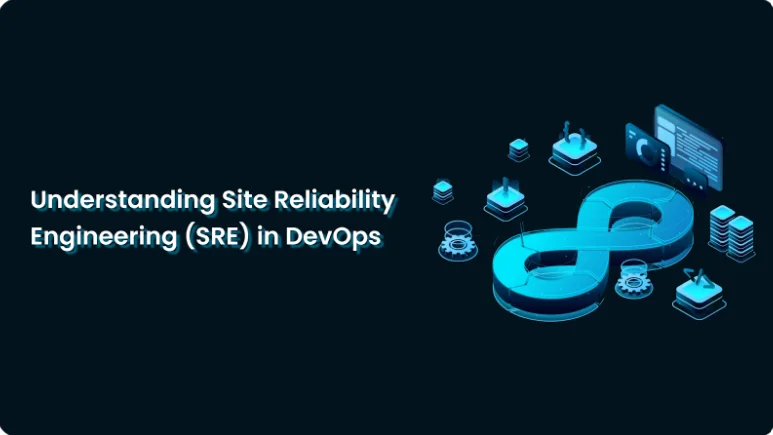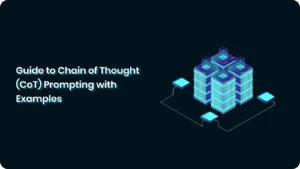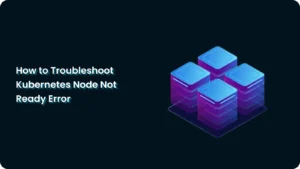Understanding Site Reliability Engineering (SRE) in DevOps

Boost IT performance with SRE in DevOps. Enhance automation, reliability, and user experience while saving costs.
Modern systems demand consistent reliability and performance, especially as businesses grow increasingly dependent on digital services. Ensuring such reliability is not a passive task but a systematic effort. Site Reliability Engineering (SRE), introduced by Google in 2003, is the bridge between software development and IT operations, designed to maintain scalable, efficient, and resilient systems.
In this article, we explore SRE’s principles, key metrics, advanced configurations, and its role in DevOps, providing a comprehensive understanding of this essential discipline.
What is Site Reliability Engineering (SRE)?
Site Reliability Engineering (SRE) is a discipline that integrates software engineering approaches into IT operations to ensure highly reliable and scalable systems. It is rooted in the principle of treating operations as a software problem, emphasizing metrics, automation, and engineering rigor.
Reliability is quantified using Service Level Objectives (SLOs), which are derived from granular Service Level Indicators (SLIs). These SLIs measure performance metrics like latency, throughput, and error rates, forming the basis for all operational goals.
SRE is grounded in a philosophy that aligns system design with customer-centric goals. It operationalizes reliability as a measurable engineering outcome rather than a subjective aspiration.
It integrates seamlessly into modern CI/CD pipelines, embedding reliability checks at every stage of the development lifecycle.
The Foundation of SRE
SRE is the intersection of DevOps and traditional IT operations. It introduces software engineering principles to operations tasks, aiming to address customer needs through automation and collaboration. Instead of reacting to problems, SRE takes a proactive approach, building systems that prevent failures before they occur.
The success of SRE lies in its principles, which guide teams to build and maintain reliable systems:
- Automation: Manual intervention in repetitive operational tasks is minimized through automation. Automated pipelines handle deployment, scaling, log analysis, and incident resolution to reduce toil and error potential. Infrastructure as Code (IaC) principles govern system provisioning and configuration, ensuring consistency across environments.
- Monitoring and Observability: Observability frameworks embed telemetry within systems, exposing logs, metrics, and distributed traces for real-time insights. SRE employs advanced diagnostic tools for anomaly detection and root cause analysis, leveraging predictive analytics to preempt failures.
- Error Budgets: Error budgets establish a balance between reliability and new feature deployment. They define acceptable limits for system downtime or failure. Breaching the error budget triggers incident reviews and operational halts, emphasizing system stability.
Key Metrics in SRE
Metrics provide a clear view of system health and performance. The most critical include:
Service Level Indicators (SLIs)
SLIs are low-level, quantifiable metrics that reflect the performance and reliability of specific components within a system. They are derived from real-time telemetry data and often monitored through distributed tracing systems.
Critical SLIs for Kubernetes-based environments include metrics related to node performance, pod scheduling success rates, and container resource utilization. For accurate measurement, SLIs must correlate directly with user-impacting events, making them the most actionable layer of reliability data.
Service Level Objectives (SLOs)
SLOs are operational targets defined based on SLIs. In Kubernetes systems, SLOs are used to measure cluster reliability by establishing thresholds for metrics like control plane latency or pod readiness rates.
These objectives form a foundational part of service reliability contracts within teams and are often enforced through automated alerting and reporting systems. SLOs serve as the decision-making framework for prioritizing workloads, balancing system stability with feature delivery, and planning maintenance schedules.
Service Level Agreements (SLAs)
SLAs formalize performance commitments to external stakeholders or customers. In Kubernetes environments, SLAs often account for multi-zone and multi-region availability to address the distributed nature of workloads.
By defining enforceable guarantees, such as uptime percentages or failover recovery times, SLAs offer a clear set of expectations. Establishing SLAs that integrate tightly with SLOs ensures alignment between operational capabilities and customer demands, reducing the risk of penalties from missed targets.
By focusing on these metrics, SRE teams maintain transparency and prioritize improvements where they matter most.
The Role of Site Reliability Engineers
SREs are at the core of this discipline, bridging development and operations roles. Their responsibilities include:
Incident Management and Mitigation
SREs design and maintain robust incident response frameworks tailored to Kubernetes ecosystems. This involves defining real-time alert thresholds for metrics such as control plane errors, pod failures, or node unresponsiveness.
Using detailed, Kubernetes-specific runbooks and automated remediation scripts, they ensure swift recovery with minimal service disruption. Blameless post-mortems follow every incident, emphasizing systemic fixes over individual accountability.
Proactive Capacity Planning
Efficient resource utilization is critical in cloud-native environments. SREs analyze historical telemetry data, including node utilization rates and workload distribution, to predict future demands.
They implement dynamic provisioning strategies using Kubernetes resource quotas and autoscaler configurations, ensuring clusters can handle increased traffic without overprovisioning. Advanced modeling techniques, such as burst capacity simulations, help forecast and prepare for traffic spikes.
Scalability and Automation Engineering
Scaling operations in Kubernetes requires specialized processes to manage workload distribution effectively. SREs develop automation pipelines for horizontal and vertical scaling, leveraging
Scaling operations in Kubernetes requires specialized processes to manage workload distribution effectively. SREs develop automation pipelines for horizontal and vertical scaling, leveraging Horizontal Pod Autoscalers (HPA) and Vertical Pod Autoscalers (VPA).
They also integrate workload-specific tolerations and taints to optimize node assignments, ensuring that scaling operations align with application requirements and cluster health.
Eliminating Toil and Optimizing Operations
SREs focus on reducing repetitive, low-value work (toil) by identifying automation opportunities within Kubernetes environments. Tasks such as log aggregation, pod health checks, and resource balancing are streamlined through automation frameworks.
By deploying Custom Resource Definitions (CRDs) and operator patterns, SREs enable self-healing clusters, freeing teams to focus on innovation and strategic improvements.
These responsibilities highlight how SREs uphold reliability while enabling agility.
SRE and DevOps: Partners in Progress
Though SRE and DevOps share goals, they take distinct approaches:
- DevOps emphasizes cultural collaboration, speed, and continuous delivery. It brings teams together to break silos and improve workflows.
- SRE prioritizes reliability, stability, and proactive problem-solving. Engineers ensure that systems maintain high uptime and deliver predictable performance.
| Aspect | DevOps | SRE |
|---|---|---|
| Focus | Cultural collaboration, speed, and continuous delivery | Reliability, stability, and proactive problem-solving |
| Goal | Breaking silos and improving workflows | Ensuring systems maintain high uptime and predictability |
| Primary Approach | Emphasizes iterative development and fast deployments | Prioritizes system resilience and operational efficiency |
| Team Dynamics | Brings teams together to streamline development and operations | Engineers take ownership of reliability goals |
| Core Activities | Continuous integration, delivery pipelines, and automation | Monitoring, incident response, and capacity planning |
Together, they ensure fast and dependable software delivery. SRE’s focus on metrics and resiliency complements DevOps’ emphasis on iterative development.
Curious about how DevOps and SRE work together? Watch industry experts Seth Vargo and Liz Fong-Jones dive into the similarities and differences between these two approaches:
The Beneficial Value of SRE
Organizations adopting SRE practices gain significant advantages:
- Higher Reliability: Automation and monitoring reduce downtime and prevent outages. Reliable systems build customer trust and retain users.
- Better Scalability: Systems are designed to grow effortlessly with business needs. Scalable solutions handle fluctuating traffic seamlessly.
- Cost Efficiency: Reduced manual intervention and resource optimization save money. Efficient infrastructure management lowers operational costs.
- Improved User Experience: Reliable services lead to increased customer trust and satisfaction. Users are more likely to engage with platforms that are consistently available.
These benefits make SRE a cornerstone for businesses looking to scale sustainably.
Challenges in Cloud-Native Environments
As more organizations adopt cloud-native architectures, new challenges arise for SRE teams:
- Data Management: Handling distributed data across multiple services and environments. This includes ensuring data consistency and availability.
- Balancing Innovation with Reliability: Supporting fast development cycles without compromising stability. Teams must integrate new features without disrupting services.
- Cloud Migration: Transitioning legacy systems to the cloud while maintaining performance. Migration plans need to minimize downtime and errors.
Solutions include robust observability tools, automation for scaling, and strong incident management processes. These ensure cloud-native systems remain reliable and responsive.
How Nudgebee Enhances Kubernetes Management
Nudgebee is an advanced platform leveraging AI-Agentic Workflows designed to streamline Kubernetes operations, optimize resources, and enhance system reliability. Nudgebee’s AI-Agentic Assistants assist SRE & Ops Teams with Its intelligent task automation enabling them to manage clusters effectively while reducing costs and improving productivity.
Key Benefits of Nudgebee with its AI-Agentic Assistants:
- Rapid Incident Resolution: The Troubleshooting Agent reduces resolution times from hours to minutes with guided workflows and automated remediation.
- Cost Optimization: The FinOps Agent delivers 30-60% cost savings with features like right-sizing, real-time anomaly detection, and autonomous optimization.
- Boosted Productivity: The CloudOps Agent automates repetitive tasks and supports workflows, improving operational efficiency by 100-200%.
- Safe Automation: Nudgebee offers controlled automation with guardrails, human-in-the-loop features, and dry-runs for risk-free operations.
- Scalability Support: The AI-driven platform augments team capabilities, enabling seamless scalability without additional resources.
Nudgebee empowers teams to maximize efficiency, reduce downtime, and scale confidently in dynamic cloud-native environments.
Conclusion
Site Reliability Engineering isn’t just a methodology. It’s a cultural shift that prioritizes reliability and customer satisfaction. For organizations adopting cloud-native strategies, SRE offers the tools and frameworks needed to balance innovation with stability.
Take the complexity out of managing your Kubernetes operations with Nudgebee. Whether it’s resolving incidents faster, cutting unnecessary costs, or scaling effortlessly, Nudgebee is here to help your team work smarter, not harder. Ready to simplify your workflow?
Try NudgeBee and see the difference for yourself.





